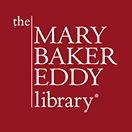In order to protect their objects and archival materials, libraries and museums follow professional practices to promote long-term preservation. Your home, church, Reading Room, or workplace may not meet the somewhat rigorous standards of libraries and museums. But the following tips, adapted from professional standards, will still help you care for your books.
Environment
- Limit exposure to light as much as possible. Both natural and manmade light sources damage paper and bindings, causing fading and the brittling of paper, cloth, and leather. Keep your books out of direct sunlight and whenever possible turn off lights in rooms where you keep your books.
- Regulate the temperature in the place where your books are stored. Libraries and museums follow a general rule to keep the temperature around 66-68°F., which is a good rule of thumb. Keeping a stable temperature, without wide, rapid fluctuations is just as important.
- Regulating humidity is also important. In your home or institution it may not be possible to strictly regulate the relative humidity. But maintaining humidity makes a big difference. If it is too high, this can promote mold growth above 72°F. If it is too low, this can cause paper and bindings to dry out and disintegrate. A general rule is to maintain a humidity level of 45-55%. A thermometer-hygrometer or hygrothermograph will monitor conditions in your home or institution. Many models are available on the web.
Cleanliness
- Handle books with clean, thoroughly dry hands. Oils and other soils on your hands can stain and damage the bindings and pages of books.
- As nice as it is to curl up with a cup of cocoa and a good book, try not to eat or drink around your books. Food and drink spills can stain and damage them and attract insects and other vermin in search of a snack.
- Be sure to carefully dust your books from time to time. But remember—don’t use the same cloth on the books that you use on the shelves themselves. A very soft brush can also be used to remove dust from fragile books. Inspect your books before dusting to observe if there is any flaking, tearing, or crumbling of the bindings and pages, as these might break off during dusting.
- Do not use water, solvents, or leather dressings on your book bindings, even if you feel they are dirty or dry. If your books need more than routine dusting, consult a professional for advice or assistance.
Handling
- Keep books upright on bookshelves—straight and not leaning. Use bookends where necessary. Heavy or oversized volumes can be safely stored flat. In any case, don’t overcrowd the shelves.
- Remove books from shelves by grasping over the spine near the center. Don’t “hook” the upper spine with your finger, as this causes stress, and often damage, to the spine.
- Don’t dog-ear pages, use paperclips, or place paper markers in the pages. All of these practices can cause irreparable damage. Instead, use a bookmark to temporarily hold your place. When finished reading the book, remove the bookmark.
Display
- Support the covers of a book when it is open, to lessen stress on the binding and spine.
- Turn a page about once a month, so that no page is exposed to the light for long periods of time.
- If possible, display your book in a closed display case. This will create a microclimate and keep it from being touched and accumulating dust and debris.
Seeking Professional Assistance
- Fragile books or books with problems such as torn or brittle pages, broken spines, or dry, flaking leather bindings may need the attention of a book conservator. A conservator can make suggestions for treatments to stabilize or restore your book.
- A book conservator can also make a special enclosure or box to protect your book.
Conservation Resources
- The Northeast Document Conservation Center has leaflets available online regarding the care of books, paper, and family archives.
- The Library of Congress also has information on the basic care of library materials and family archives.
- For a list of professional conservators, contact the American Institute for the Conservation of Historic and Artistic Works (AIC).
- University Products – archival supplies.
- Hollinger/Metal Edge – archival supplies.
- Gaylord – library and archival supplies.
- Light Impressions – preservation materials.

